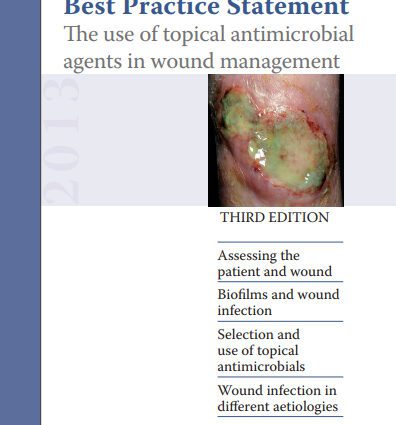Contents
Exudate: how to treat an exudating wound?
Whatever the cause of the wound or its stage of development, it is necessary to know how to adapt the treatment. How to define exudate and treat an exuding wound in order to avoid superinfection?
What is exudate?
Exudate or exudates is a general term given to the set of fluids produced by acute or chronic wounds after the hemostatic period is over.
Exudate is a liquid which, during the inflammatory phase, seeps out of the blood vessels when the permeability of the blood vessels increases.
Its characteristics are very similar to those of blood plasma. Usually pale yellow, it contains various elements including water, proteins, electrolytes, leukocytes, proteolytic enzymes, growth factors and wastes.
Its composition changes during the course of the wound. It is generally abundant and colonized during the debris phase, except in cases of necrosis. It then gradually dries up during the granulation and then epidermization phases.
The exudate should not be eliminated during the healing phase because it will contribute to healing, by covering the tissue around the wound, thanks to several actions:
- It prevents the wound from drying out;
- It promotes the migration of repair cells;
- It provides nutrients essential for cellular metabolism;
- It allows the diffusion of growth factors;
- It helps in the removal of dead tissue.
What Are the Causes of an Exuding Wound?
In addition to the size of the wound, a large amount or a high production of exudate can have many different causes and indicate the presence of bacteriological infection for example.
What are the pathologies linked to exudate?
Locally, good management requires a delicate balance between, on the one hand, moistening the wound necessary for proper healing and, on the other, stability of the exudate to prevent the wound from macerating, deterioration of the skin perished. – injury and discomfort of the person.
However, there can be mismanagement, and constant contact with excessive moisture can generate maceration which can increase the risk of infection and then delay healing.
Usually pale yellow, the exudate may then experience an unexpected change in color, consistency or odor, indicating that a change in wound status should lead to reassessment.
A green exudate announces, for example, a bacterial infection while a strong consistency shows a high concentration of proteins and therefore an inflammatory process.
It is therefore essential to consult in order to find a suitable solution to remedy these numerous risks.
What treatment to treat the exudate?
Depending on the cause, the treatment may vary but first, on the wound directly, you can rinse and clean thoroughly with tap water or with physiological saline to remove all traces of soap. Dry the wound by dabbing gently with a sterile pad then apply an antiseptic solution either as a spray or using a sterile pad to disinfect.
The amount of exudate is a significant factor to consider in the wound healing process. It depends in part on the area concerned. Therefore, the larger the surface, the greater the volume of exudate is likely to be. Thus, large burns, venous leg ulcers or inflammatory ulcers produce a higher amount of exudate.
Finally, the management of the exudate mainly involves the choice of the dressing, which remains the main option of the management because it will protect the wound. Today, there are various absorbent dressings capable of regulating the supply of humidity by capturing and maintaining the excess exudate which is not favorable to the good development of the wound.
Depending on the condition of the skin and the location of the wound, the choice of dressing will go either towards an adhesive or non-adhesive version:
- Hydro-soothing dressings allow to absorb exudates while hydrating the wound thanks to the gel layer with 45% water;
- Hydro-soothing hydrocellular dressing is indicated for the treatment of chronic and acute wounds in the budding and epidermis phase.
Diagnostic
First, the doctor will note the abundance or absence of exudate which will always reveal indications on the stage of evolution of the wound. There are factors, such as the nature, consistency and odor of the exudate, which make it possible to have a serious look at the condition of the wound.
In contrast, making a diagnosis of infection or any other underlying disease process is based on thorough evaluation and research. A large production of exudate cannot be the only piece of evidence to make a diagnosis.










